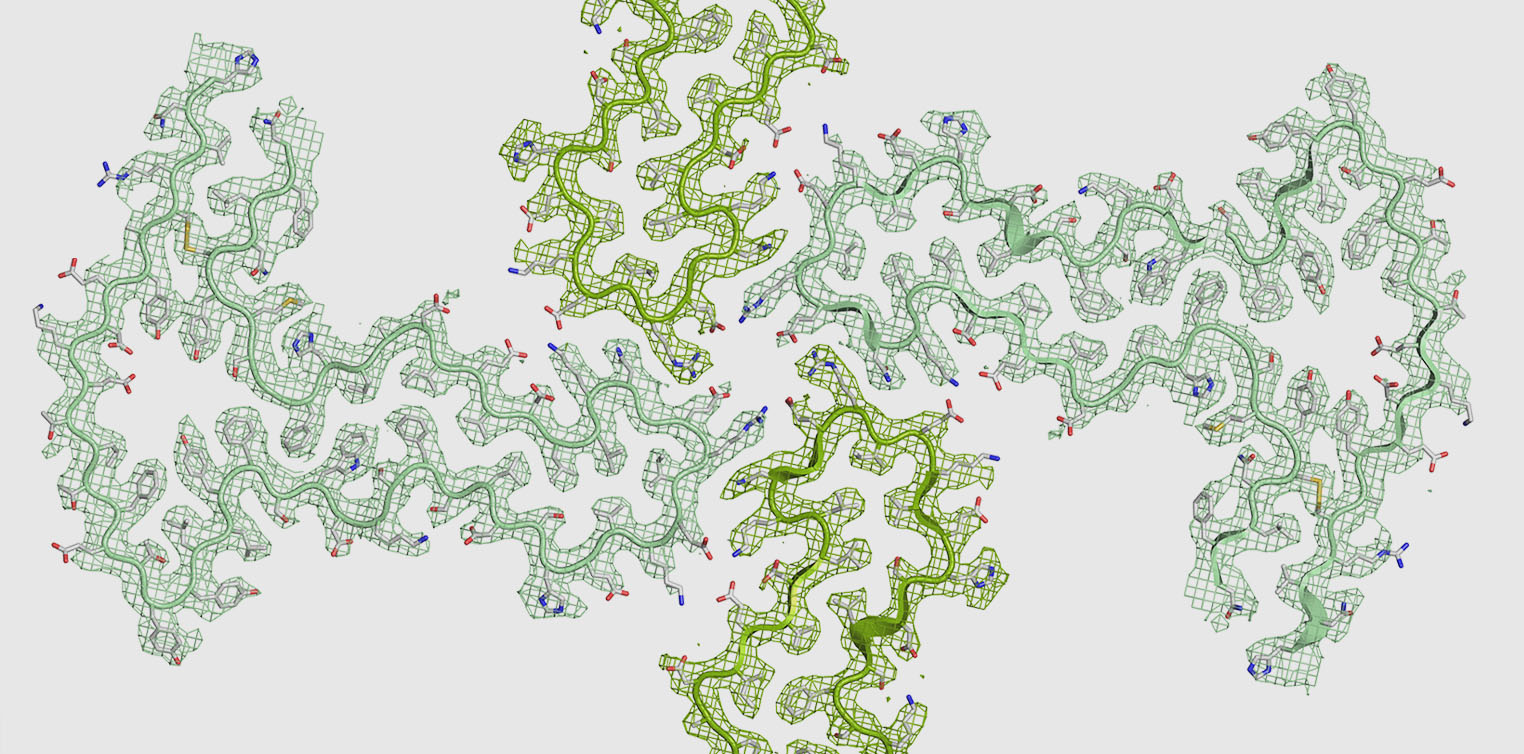New insights into β2-microglobulin amyloid aggregation

The aggregation of β2-microglobulin (β2m) into amyloid fibrils is associated with human disease, but subtly different variants of β2m are associated with diseases with distinct pathologies. Astbury researchers at the University of Leeds have used cryoEM to determine the structures of fibrils formed from three different variants under identical conditions in vitro. The research, from the Ranson and Radford Laboratories, shows that each fibril sample is polymorphic, but that that polymorphism comes about from a ‘lego-like’ assembly of a common amyloid building block. These results suggest a ‘many sequences, one amyloid fold’ paradigm in contrast with the recently reported ‘one sequence, many amyloid folds’ behaviour of intrinsically disordered proteins such as tau and Aβ.
The research is published in Nature Communications with Martin Wilkinson as first author, as: https://rdcu.be/c7FhL
